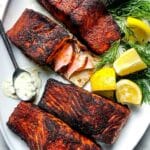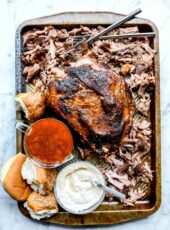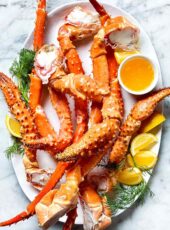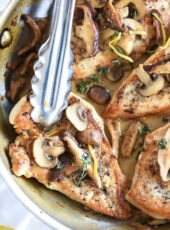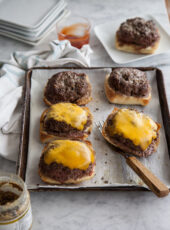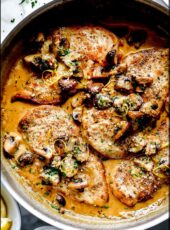This blackened salmon recipe with homemade blackened seasoning is seared in a cast-iron skillet to make the best flaky fish with a crisp Cajun-spiced crust.
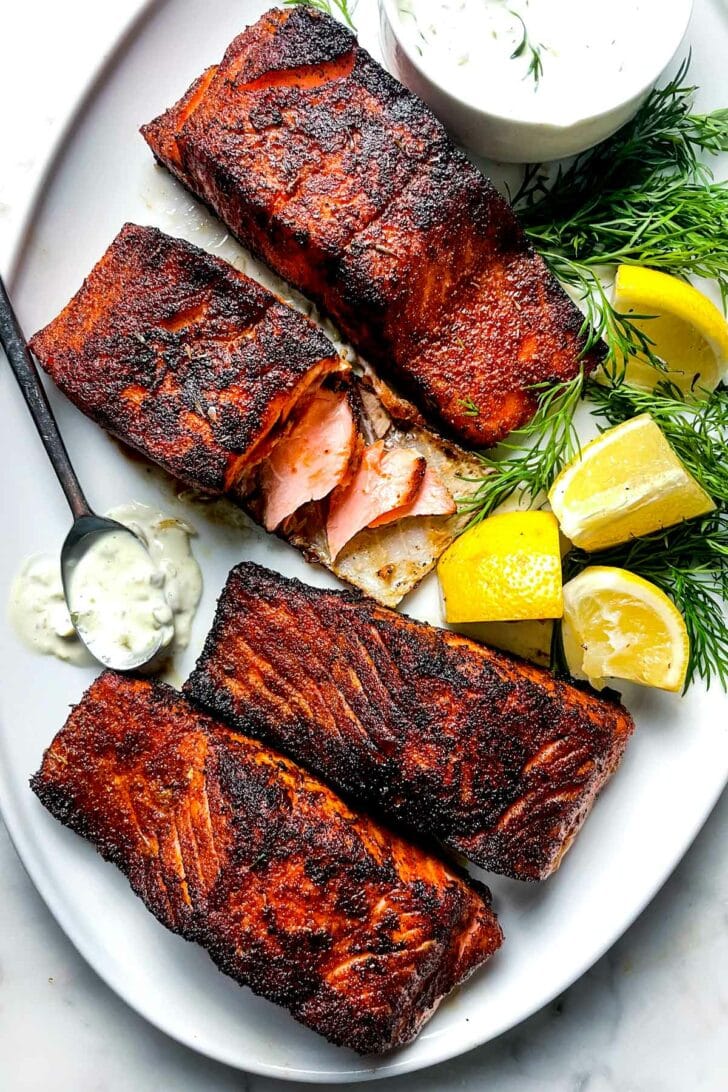
Salmon might be the most popular fish home cooks feel confident cooking and families enjoy eating. Low-fat and rich in omega-3 fatty acids, salmon is one of those perfect proteins and a mellow-flavored fish that doesn’t taste “fishy”. My tips for the best grilled salmon is one of my most popular recipes, but if truth be told, at our house it’s this blackened salmon that gets prepared most often. Seared in a hot cast iron skillet or cooked on the grill, my easy-to-make blackened seasoning gives these buttery, flaky salmon fish fillets the perfect amount of flavorful heat.
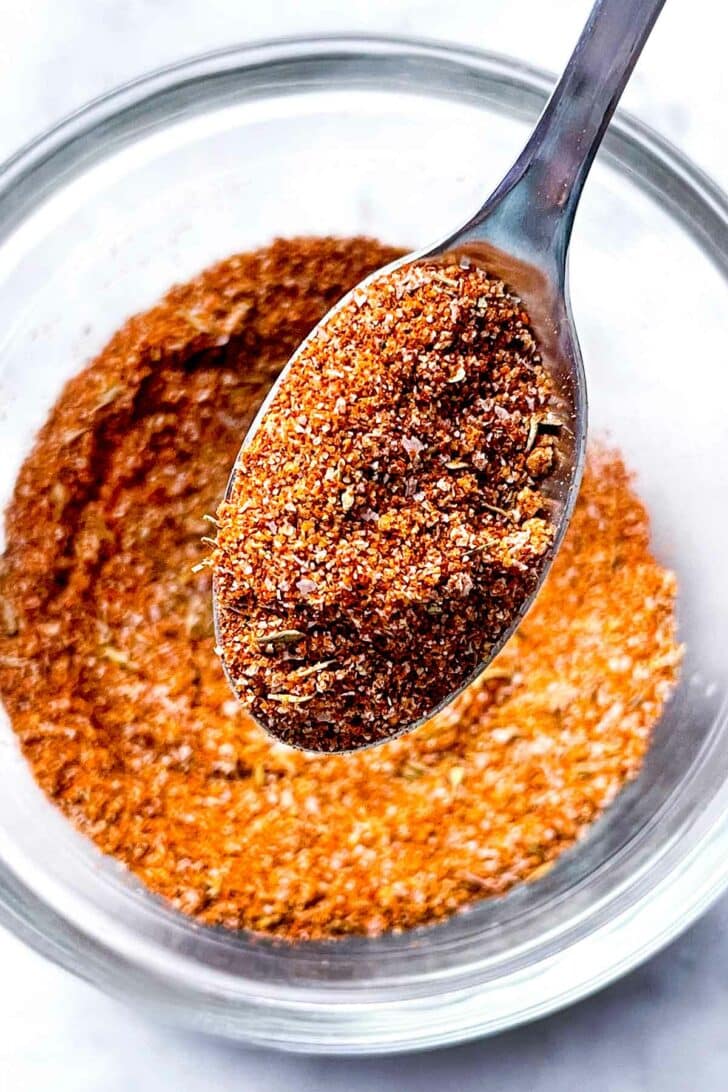
In This Post
Why It’s Called Blackened Salmon
Contrary to what the name implies, blackened fish and meats aren’t “burnt”. Blackened food is a traditional Cajun and Creole cooking method popularized in the 1980s by chef Paul Prudhomme at his Louisianna restaurant, putting blackened fish into the spotlight of American cuisine. Blackened foods like fish, shrimp, chicken, and meats are coated in a simple mix of seasonings that when cooked, create a dark brown crust that looks almost black, aka blackened.
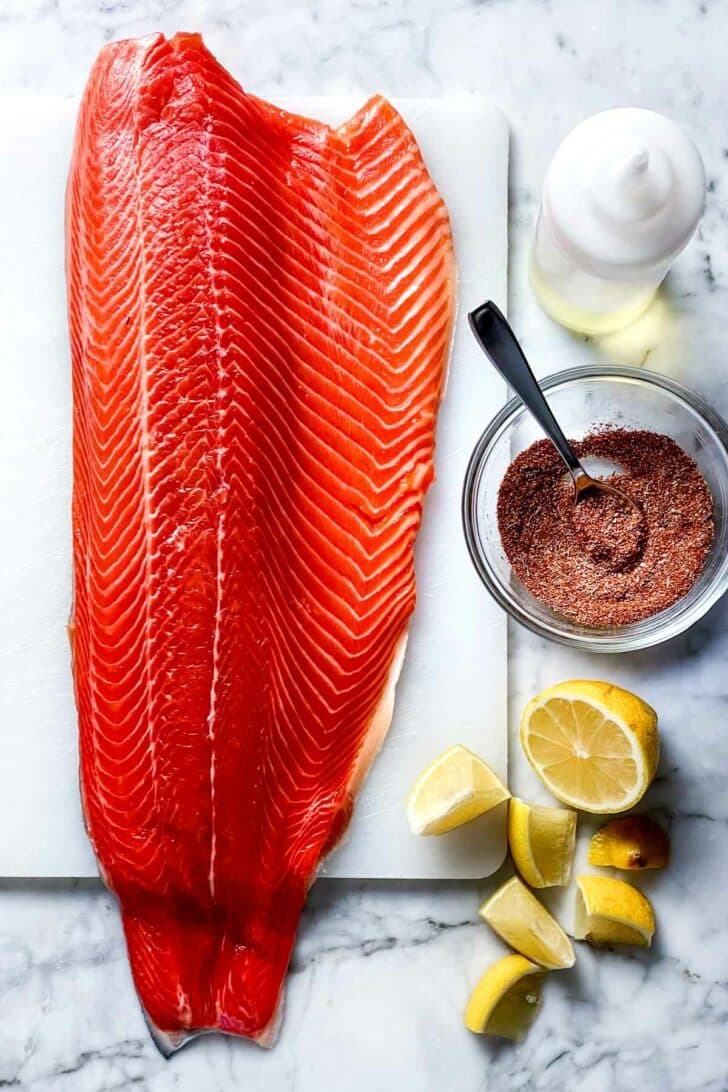
What’s In Blackened Salmon
The list is small for the big flavors that this blackened salmon dish delivers. Here’s what you need:
- Salmon fillets
- Canola oil or butter
- Paprika: I use sweet paprika. Try smoked paprika for a more dominant smoky flavor
- Cayenne pepper: Use more or less depending on your heat tolerance
- Garlic powder
- Onion powder
- Kosher salt
- Freshly ground black pepper
- Dried thyme
- Dried fennel seeds: Fennel adds a light and lemony aromatic note
- Lemon
The Best Salmon for Cooking
Most types of salmon filets work for this cooking method, but there are some fish that are more sustainable for the environment. According to the Monterey Bay Aquarium Seafood Watch, these salmon are the best for buying:
- U.S. Wild-caught salmon
- Farmed Atlantic salmon (New Zealand, Worldwide)
- Farmed king salmon (New Zealand, Worldwide)
- Farmed coho salmon
Other Types of Fish for Blackening
- Catfish
- Grouper
- Redfish
- Swordfish
- Halibut
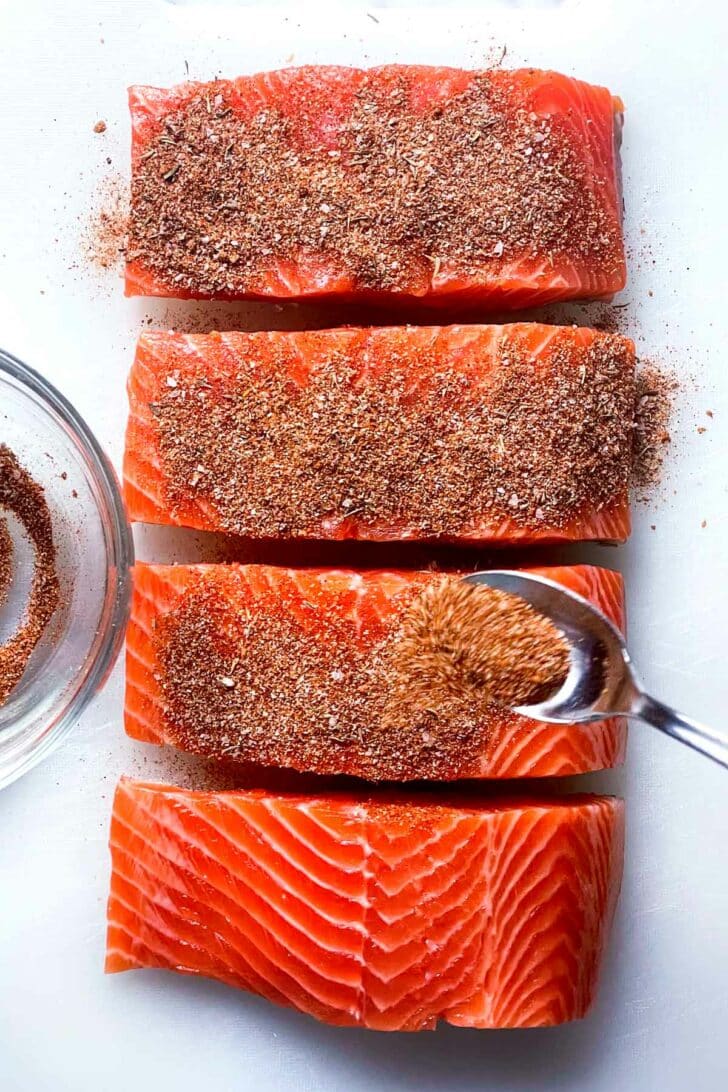
How to Make This Blackened Salmon Recipe
Trim the fresh salmon filets into 6-ounce portions. Trim off any extra thin edges of the salmon filet that will cook too fast or burn before the rest of the fish is cooked. Depending on your preference, trim off the skin or leave it on (I leave it because it’s so easy to strip away after cooking.)
Prepare the spice rub. I double or triple my homemade blackened seasoning spice recipe so it’s always on hand. Switch it up with the ingredients suggestions I share here.
Pat the salmon dry then drizzle with oil. A dry surface ensures the oil adheres to the fish and the seasoning adheres to the oil. Instead of using oil, brush the fish with melted butter.
Sprinkle the filets with the seasoning blend. Firmly pat the blackened spices into the fish filets so it sticks. Add seasoning to the sides of the filet but don’t worry about seasoning the skin side.
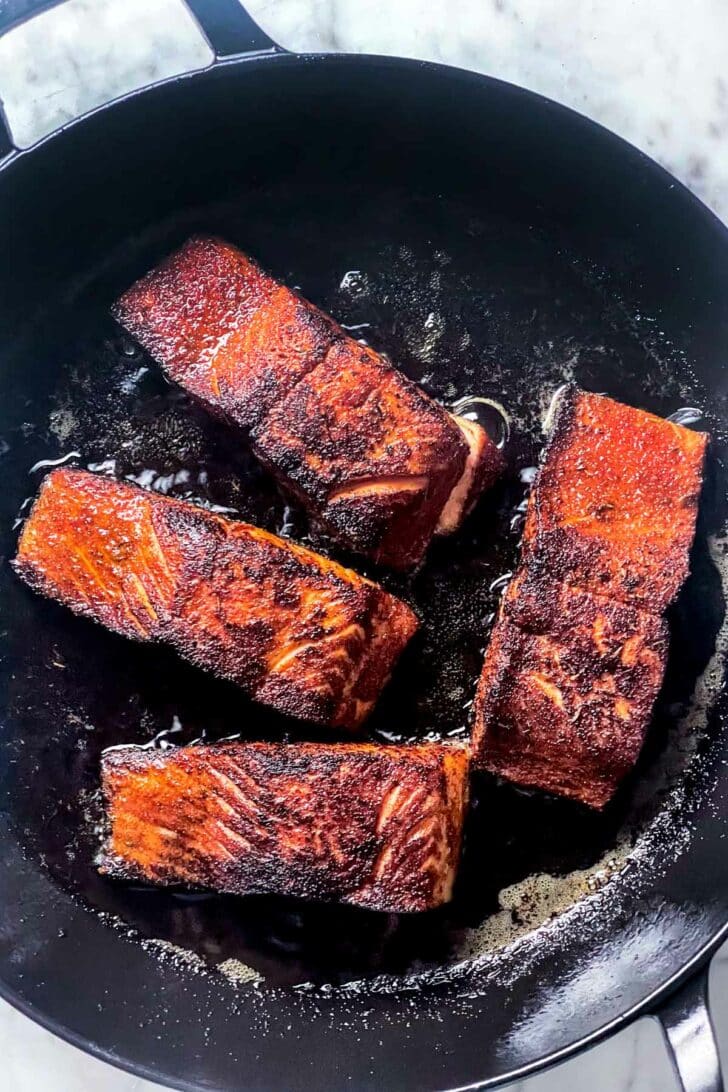
How to Sear the Salmon
Get a large cast iron skillet good and hot before adding the oil. Heat the skillet on medium-high heat for 3-5 minutes before adding the oil. Warm the oil for just about 30 seconds then add the fish filets cooking on each side for 2-3 minutes or just enough to brown the spices. Cook first on one of the short sides, then the other short side, and then then the top or flat fleshy side. The last flip should finish with the fish skin side down.
Place the fish in the pan then don’t fuss with it or it will stick. It only takes 2-3 minutes per side for the crust to develop and brown and for the fish to release easily from the pan.
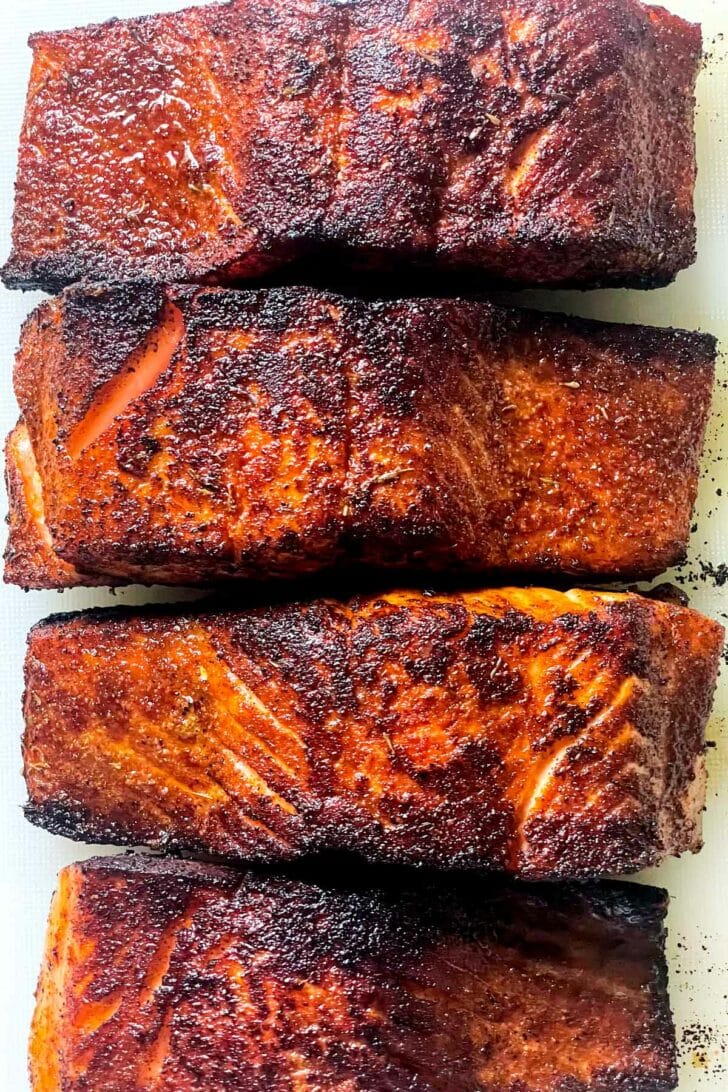
How to Avoid Smoking Up the Kitchen
While I still sometimes buffalo my kitchen, I’ve found that getting the skillet hot on medium-high heat for 5 minutes or so BEFORE adding the oil reduces the smoke point so I don’t smoke out the kitchen. Add the oil, let it warm for 30 seconds or so, then add the fish filets. Turning on the fan and opening a window or door for ventilation doesn’t hurt either.
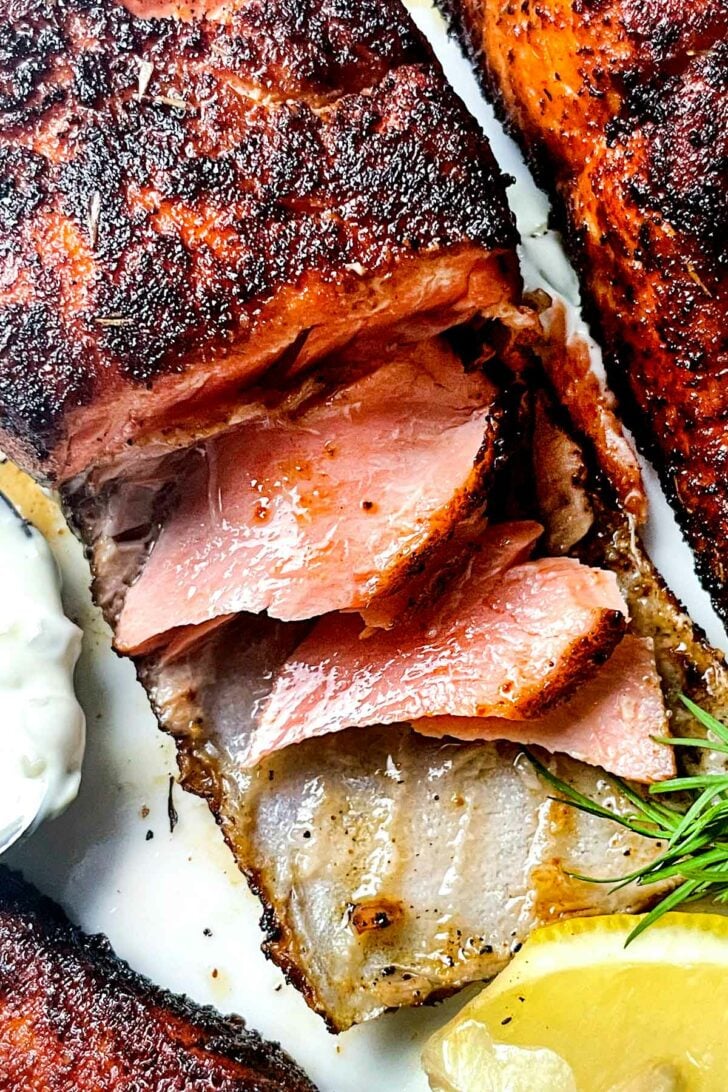
How to Tell When Salmon Is Done
Think of the doneness of salmon like the perfect medium rare steak. It should be a slightly darker pink in the middle with a flaky juicy bite.
- Give the salmon filet a gentle squeeze of your fingers. It should still feel plump but not hard.
- The filet will firm up and begin to flake where you should see some slight separation.
- Remember the salmon will have carry-over cooking and continue cooking as it rests.
What’s the White Stuff on Cooked Salmon?
That white stuff may look off-putting but it doesn’t mean your salmon is bad. According to Bon Appetit, Albumin is a liquid protein in the fish when it’s raw, but coagulates and becomes semi-solid when the salmon is heated. But it doesn’t always appear because it depends on how hot you cook the salmon. High heat means more albumin. The skin acts as a barrier so try to cook your salmon longer skin-side down and above all, don’t over cook it.
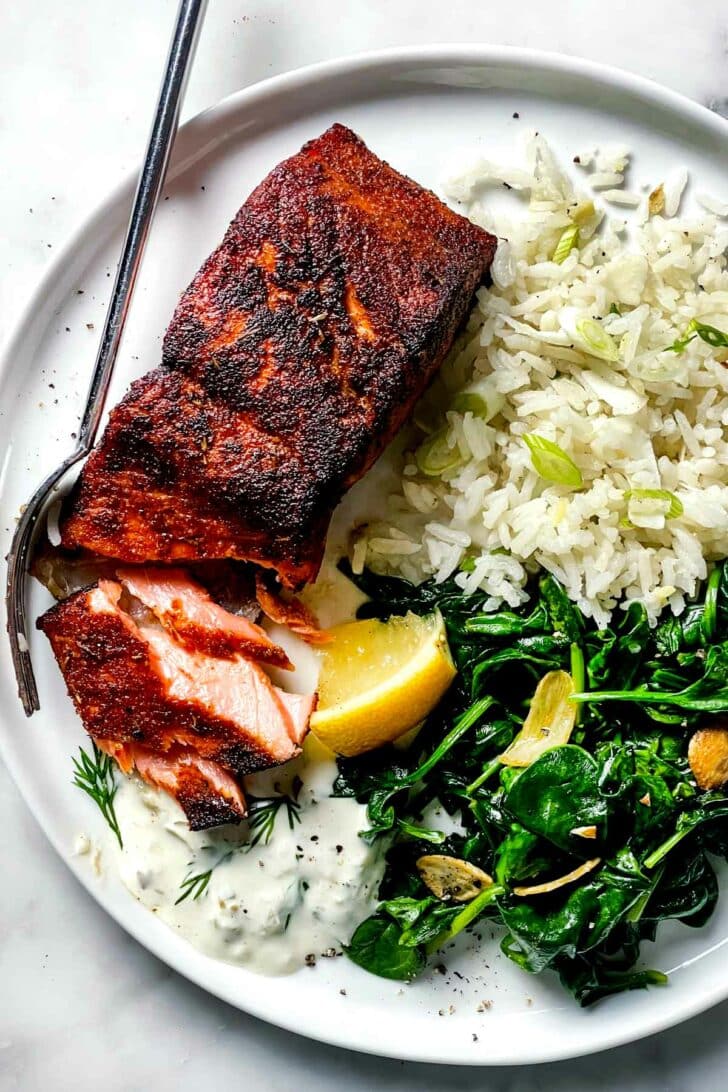
How to Make THE BEST Blackened Salmon
Ingredients
- 2 tablespoons sweet paprika
- 2 teaspoons cayenne pepper
- 3 teaspoons onion powder
- 2 teaspoon garlic powder
- 1 teaspoon freshly ground black pepper
- 1 teaspoon kosher salt
- 1 teaspoon dried thyme gently crushed
- ½ teaspoon fennel seeds gently crushed
- 1 pound salmon fillets
- 4 tabelspoons canola oil
- 1 lemon
Instructions
- Preheat a large cast iron skillet on medium-high heat for about 5 minutes.
- While the pan is heating, add the spices to a small bowl and toss with a fork to mix well.
- Trim any thin pieces from the edges of the salmon fillet and cut it into 6-ounce portions. Pat well with paper towels then drizzle the fillets with 1 tablespoon of oil, using your fingers to spread the oil over the fleshy sides.
- Sprinkle the flesh of the salmon with the blackened seasoning mix, including the sides but not the skin. Press the seasoning into the fish so it adheres then shake off any extra.
- Add the rest of the oil to the skillet and heat for 30 seconds (and turn on the stove’s overhead fan). Starting with the short sides of the fillets, place the salmon in the pan. Cook undisturbed for 2 minutes until the salmon easily release from the pan. Flip to the other short side and cook for another 2 minutes, then flip and cook the top fleshy side of the salmon for 2 minutes. Cook until the seasonings brown and the fish moves easily in the pan. Flip to the to cook skin side down for another 3 minutes or until the salmon begins to firm up and flake and looks cooked through. It should still be somewhat pink in the middle. Transfer to a serving platter or plates, add a squeeze of lemon and serve with tartar sauce. The salmon is great served hot or chilled
